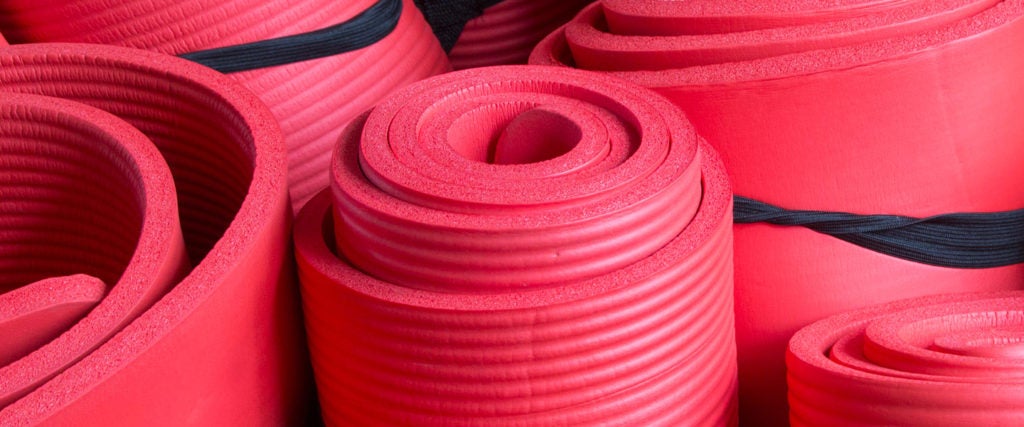Sometimes I’ll see those one-inch thick exercise mats and think, “Hell yeah, I’d like to take a nap on that bad boy.” Unfortunately, taking a nap isn’t what I’m supposed to do on an exercise mat at all, so purchasing one based on nap-ability is probably the wrong way to go. In fact, even comfort can be the wrong factor to consider when choosing the right mat. So what exactly should you look for in terms of mat thickness?
Naturally, it all depends on what it is you’re looking to do. While some mats are indeed designed to provide comfort, many are catered more toward grip and protection. That protection might be for you and your knees, or it might be for the floors beneath the mat. Either way, mats are often more about safety than simply making your back feel better.
Among the most ubiquitous mats are those designed for yoga. The “standard” yoga mat is typically between an eighth and a quarter inch thick. Depending on the type of yoga you’re doing, some cushion is fine. Yin and restorative yoga styles often incorporate slower, stretchier movements wherein a squishier mat aids in relaxation. In other yoga styles, however, like vinyasa, hot or power yoga, that squishiness can be a hindrance. In these practices, the purpose of the mat is far more about grip: Particularly when you might be sweating or doing inversions and handstands, the mat is primarily designed to keep you from slipping around. For this reason, those who practice these forms of yoga often prefer thinner or more textured mats to aid with stability, usually around an eight or a sixth of an inch thick.
These same laws of stability tend to apply to exercises like weightlifting as well, though the requirements can be different. When lifting weights, it’s essential to maintain a proper stance. Standing on a mat that’s too thick can impede that. However, many gyms have three-quarter inch thick rubberized mats for flooring to help protect the actual floors beneath them. Considering people might drop their weights, these mats help protect against damage.
Areas where cardio classes are performed often have similarly thick flooring, though the material is slightly different to help protect people’s joints as well as reduce impacts on the floor from jumping. For your own home workouts, though, there aren’t as many affordable thick-but-sturdy flooring mats. Something in the non-slip rubber yoga-mat range of around a sixth to a quarter of an inch is typically in the sweet-spot of durability and affordability for providing some protection to you and your floors, without requiring you to invest in actual professional flooring.
As for those nap-worthy mats, there are a couple of scenarios where they’re appropriate. Half-inch or thicker mats are often called “pilates mats,” and they can indeed be useful for floor exercises where you’re less focused on balance but still want to protect your joints or spine. Situps or donkey kicks, for example, can be more comfortably performed on a thicker mat. Thick mats can also be good for stretching.
If you’ve gotta pick one, that aforementioned sixth to a quarter inch mat is probably ideal. With that, you can protect yourself and your floor without sacrificing versatility. They come in a huge variety of lengths and widths. If you find you need more cushion on your back or knees when performing specific moves, you can just add a towel beneath you. Thicker yoga mats also tend to be less durable, so it might be best to invest in a thinner one and swap out cheap thick ones as needed. Unless, of course, you’re just buying it for naps — in that case, feel free to ignore my advice entirely.

